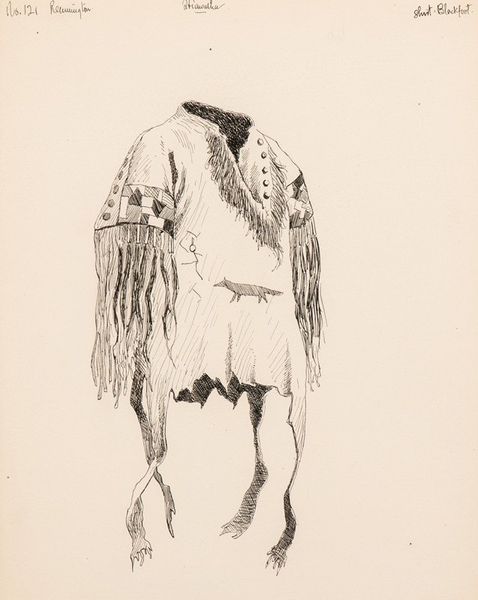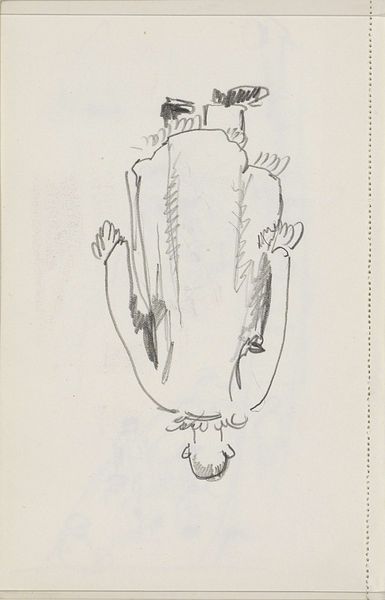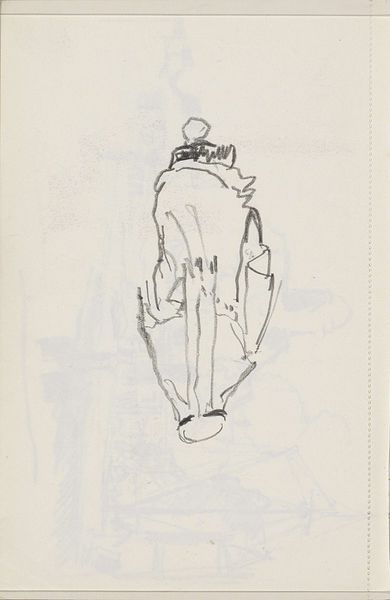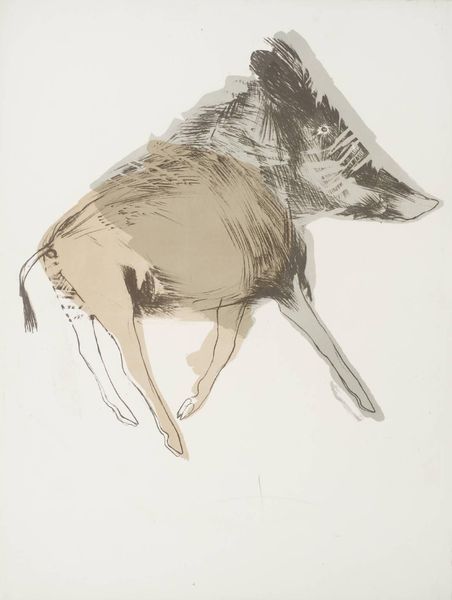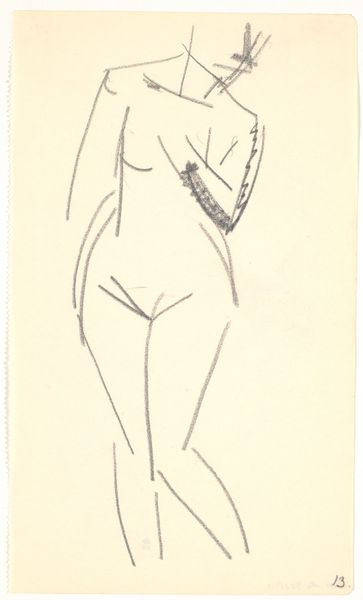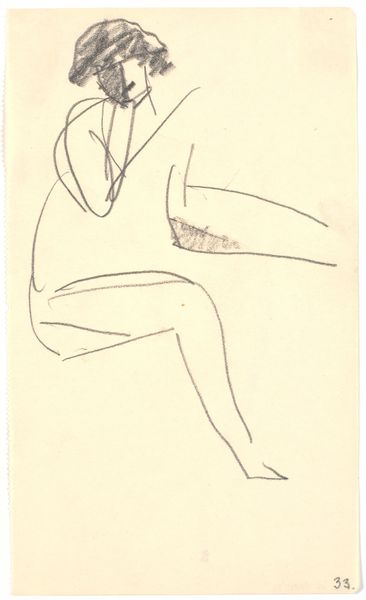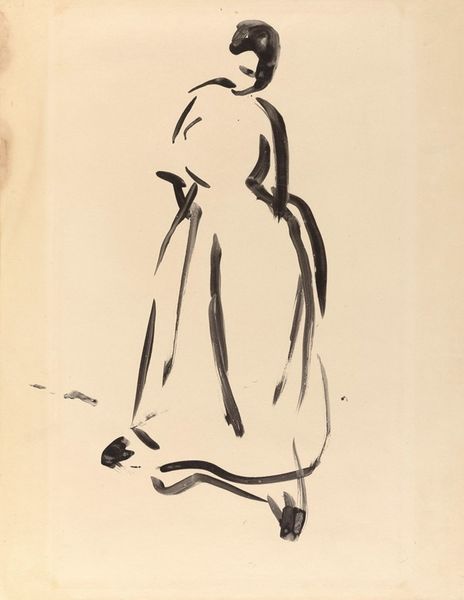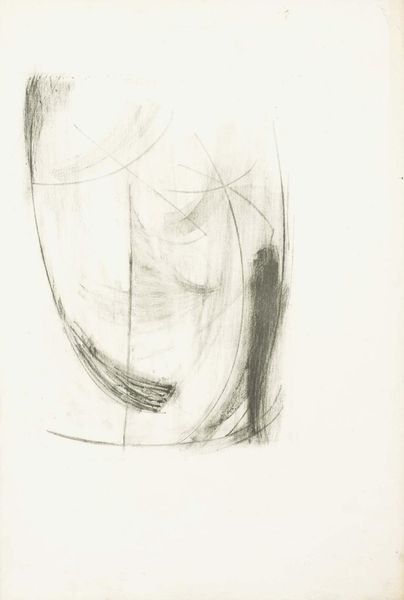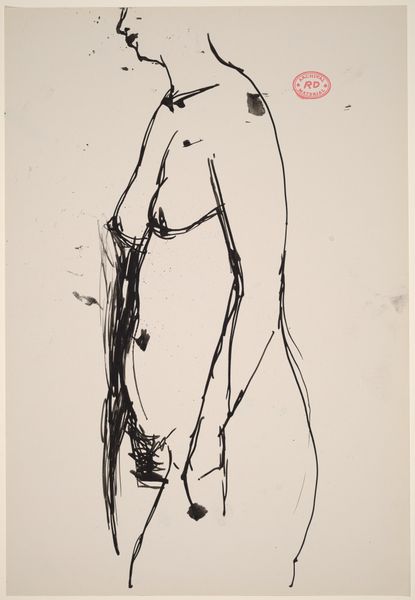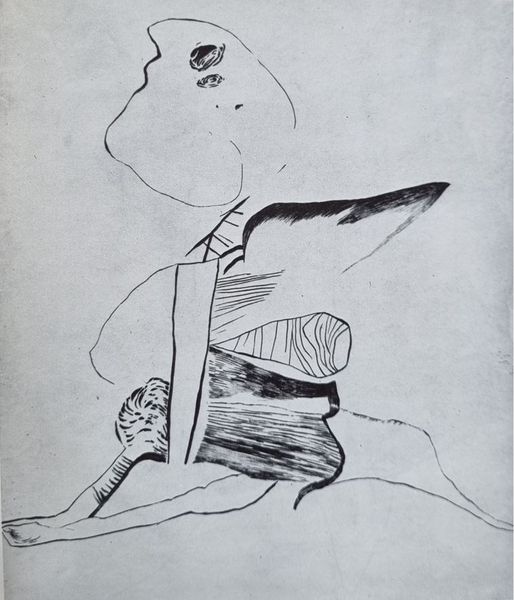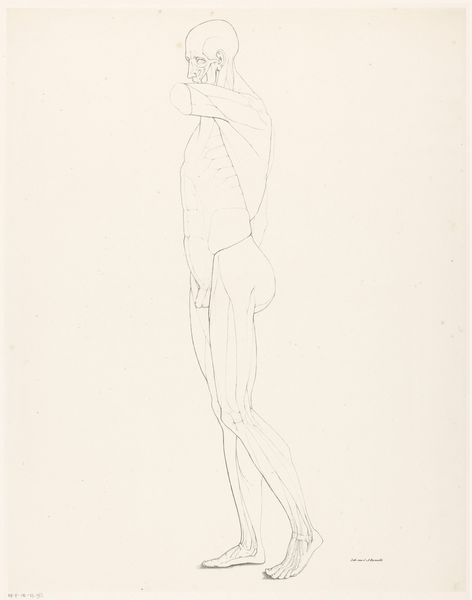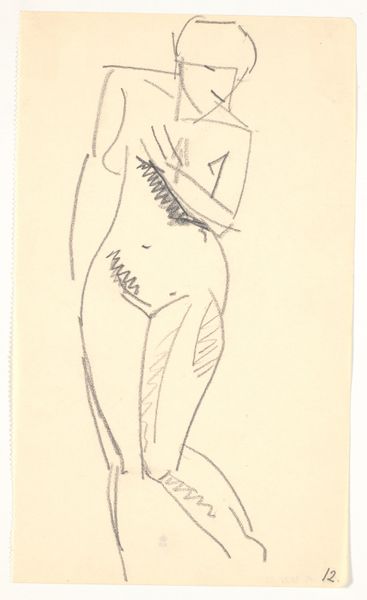
drawing, graphite
#
portrait
#
drawing
#
pencil sketch
#
expressionism
#
graphite
Copyright: Public Domain: Artvee
Editor: Here we have Edvard Munch's "Sitzender Raubvogel. Adler," or "Sitting Bird of Prey. Eagle," from 1908, rendered in graphite. It's a striking, almost brutal sketch. What is your take on this piece? Curator: Look at the immediacy captured by the medium. Graphite allows for rapid mark-making, suggesting a focus on the *process* of capturing the bird's essence rather than striving for realistic detail. Do you see how the raw materiality of the graphite, almost crudely applied, reflects the Expressionist aesthetic and the perceived 'rawness' of modern life? Editor: I see what you mean. It feels less about the bird itself, and more about... how Munch saw it? Curator: Exactly. Think about the social context too. 1908 was a time of increasing industrialization and shifting social structures. Expressionism, with its emphasis on subjective experience, rejected academic tradition and mass production by valuing unique vision of the artist. Consider also how drawings in graphite might have served as exploratory tools, cheaper means for working out his vision prior to more permanent oil paintings. This challenges conventional boundaries between "high" and "low" art. What does the choice of a bird of prey evoke in this period of intense social upheaval and change? Editor: Maybe it reflects anxieties about power? A predator amidst uncertainty? Curator: Precisely. It isn't just about seeing a bird; it’s about understanding the network of labor, material, and thought processes embedded in its creation and reception during its own historical moment. Considering that, does it change how you perceive this piece? Editor: Definitely. It moves from just being a sketch of a bird to a record of the artist’s engagement with materials and the complex social landscape of his time.
Comments
No comments
Be the first to comment and join the conversation on the ultimate creative platform.
